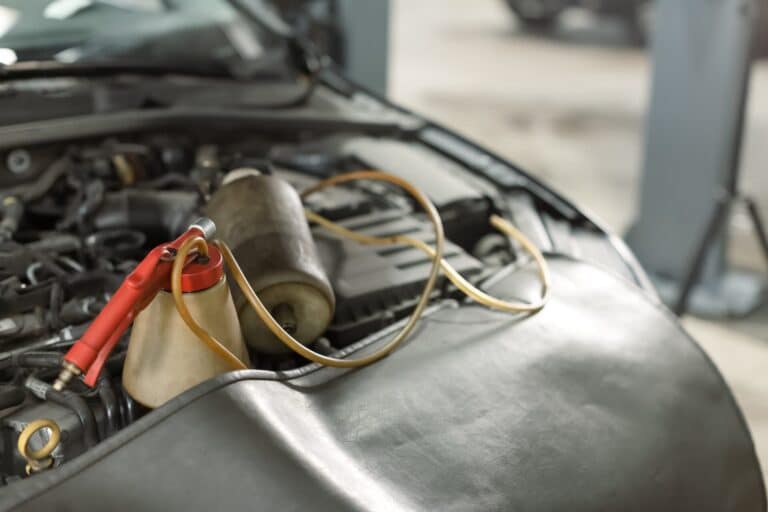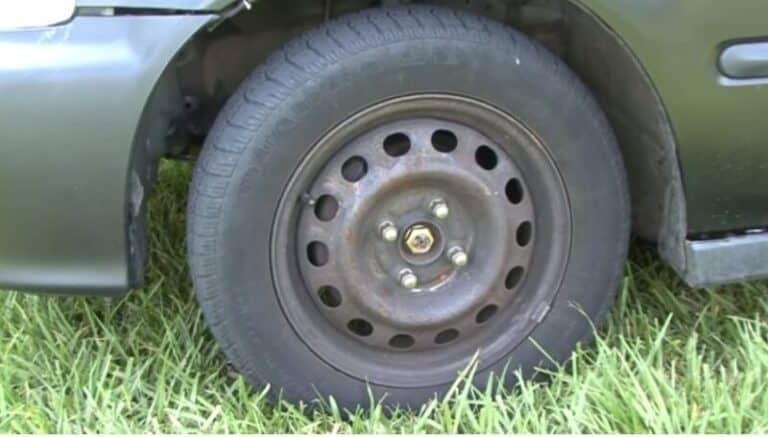545RFE Relearn Procedure? (Beginners Guide)
545RFE relearn procedure adapts the vehicle’s transmission system to new timing values and shift pressure.
Not following relearn procedures correctly can lead to catastrophic transmission damage and premature transmission wears.
Although 545RFE is an upgrade of the 45RFE and shares similar transmission traits with its predecessor, the gear ratios on both transmission systems are different.
These differences in gear ratio make relearn procedures slightly different for each system.
Hence, let’s take a thorough, step-by-step guide through the 545RFE relearn procedure.
To activate relearn, connect the car to a vehicle scanner. Activate “Quick learn”, under Special/Miscellaneous functions. An informative pop-up informs you to ensure some necessary settings. Move the shift lever to Overdrive, neutral, and back to Overdrive. Allow the procedure to prime up. Finally, shift the lever to park once the procedure is complete.
What Happens During a Relearn Procedure?
During relearn procedures, vehicle scanners run diagnostics on the car to adjust and adapt the vehicle to recent maintenance or adjustments in the RFE transmission system.
Usually, vehicle scanners are accessed either through computers or mobile phones.
Relearn procedures have different groupings, including Automatic relearn procedures, manual relearn procedures, and OBD relearns procedures.
OBD relearn procedures use scan tools sometimes attached to the car’s OBD port to transfer new sensor identifications directly to the car’s ECU.
OBD relearn procedures are mostly run on Asian and Specialty European cars.
OBD relearn procedures are slowly becoming the standard for all vehicles.
It is much easier to work with, and you can apply it in all vehicles that use it, regardless of the vehicle type.
It also saves confusion and time because the steps are fewer. In addition, most cars can use more than one relearn procedure type.
In the Automatic relearn procedure, the computer is programmed to recognize when maintenance has been done on it.
And then, the computer goes to work, readjusting and recalibrating the vehicle independently, without any external assistance.
Maintenance or adjustments that require relearn procedures include air pressure adjustment, tire rotation, or sensor replacements.
Automatic relearn procedures are mainly on Jeep, Chrysler, and Dodge vehicles.
However, relearn procedures can also be triggered manually by disconnecting the cables attached to your car batteries, thereby cutting off the power supply and forcing it to reboot.
Once the computer reboots, it relearns the vehicle’s system parameters by running a diagnostic check while you drive.
Manual relearn procedures are also called stationary relearn procedures.
It is important to note whenever your car’s computer is having difficulty running, relearn procedures, and get it fixed as quickly as possible.
Relearn procedures are designed by the car manufacturer and follow a unique sequence of steps to run proper diagnostics on the vehicle.
If you follow all steps correctly, the vehicle will be fully functional in a relatively short time.
How do you Relearn a Transmission?
Relearn procedures help recalibrate shift timing and readjust the transmission’s adaptive mode to recent maintenance or adjustments.
However, before the Quick Learn procedure can be initiated on your vehicle, you must first verify a few system checks.
The Car’s transmission fluid must be within its optimum operating range, there must be no fault codes in the transmission control module (TCM), and the vehicle’s transmission fluid temperature must be greater than 60 degrees Fahrenheit.
In addition, not all vehicle scanners can access and affect Quick Learn procedures on the vehicle.
Ensure the Quick Learn procedure is operable in the particular vehicle scanner you use before proceeding with the relearn procedure.
Once the scan tool is connected, check for diagnostic trouble codes (DTC) in the transmission control module (TCM). Reset the codes before initiating the Quick Learn.
Accessing your scan tool software, proceed to special or miscellaneous functions, where you will find the Quick Learn icon.
An informative text will pop up once you click the Quick Learn icon, informing you that the selected icon will initiate the Quick Learn procedure.
Click on next, and another informative pop-up would instruct you to ensure the car is running, the brake pedal must be pressed, and the parking brake set during the entire duration of the Quick Learn procedure.
After clicking next, the system informs you to move the shift lever to Overdrive.
Once in Overdrive, shift the lever to neutral.
Then, to start the sequence, shift the lever back to Overdrive and wait while the transmission system reconfigures.
Once the procedure is done, the scan tool informs you to shift the lever to Park. The vehicle can now be taken for a drive relearn.
Certain parameters must be highlighted on the screen of the vehicle scanner.
These parameters include Actual line pressure, Desired line pressure, and all CVI values.
The drive relearn process requires shifting the gears up and down until the shift quality improves and becomes permanently consistent.
While driving, especially at the beginning stage, ensure to drive carefully and throttle lightly.
This act is necessary because, at this stage, the transmission is not ready for holding power yet during shifts.
Therefore, finding a quiet stretch of road is best to enable the car to start and stop repeatedly without disturbance or turbulence.
Slowly accelerate to up to 4th gear at 15% throttle capacity and note the shift quality.
Then repeat this process 5 or 10 times until shift changes become smooth and consistent.
Repeat the entire process, but this time at 25% throttle capacity. Repeat at 35% throttle capacity and 50% throttle capacity.
The reason for this repetitive procedure is to help the car adjust perfectly to light throttle shifts.
Trucks have a harder time learning light throttle shifts than heavy throttle shifts.
As throttle capacity increases too much heavier percentages, the line pressure readings on the scan tool’s screen begin to rise. Same as with the engine boost.
Before taking the scan tool off, verify the system’s operational level first. First, set the vehicle into 4th gear to prevent it from upshifting.
Then, gradually apply the throttle. Line pressure readings would boost up to as high as 160 psi alongside higher engine boost pressures.
This procedure would confirm that the vehicle is properly working as it should.
If you notice the Actual pressure readings dropping or not rising to par with the line pressure readings, this could indicate a fluid restriction.
Once satisfied with the vehicle’s shift quality at lower gears, you can increase it to the upper gears and test shift quality.
The CVI value readings would change during the drive learn procedure with each shift. The values stabilize between 1 and 2 points.
Once the CVI values stabilize, the driver is satisfied with the shift quality of the vehicle.
The scan tool can then be removed, and the car’s relearn transmission is successful. Does Jeep Cherokee Has Heavy-Duty Brakes? (Must know)
Conclusion
In summary, 545RFE relearn procedures require vehicle scanners or scan tools capable of accessing the Quickly learn function.
In addition, relearn procedures must be followed accurately to ensure complete and optimum vehicle operating function after the procedure.
Also, remember to check up on the vehicle’s transmission fluid, fault codes, and transmission fluid temperature before activating Quick learn.






